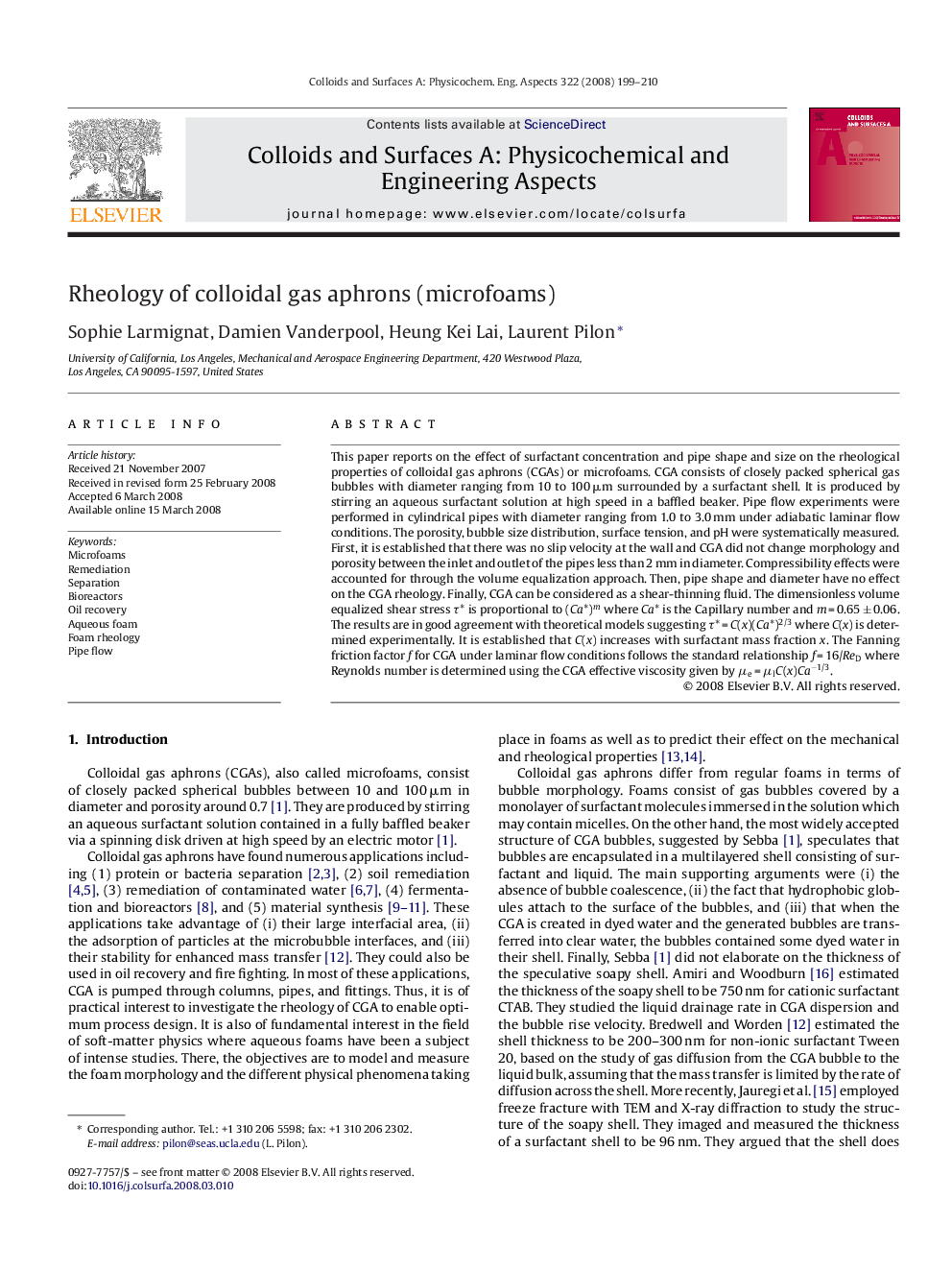| Article ID | Journal | Published Year | Pages | File Type |
|---|---|---|---|---|
| 596513 | Colloids and Surfaces A: Physicochemical and Engineering Aspects | 2008 | 12 Pages |
This paper reports on the effect of surfactant concentration and pipe shape and size on the rheological properties of colloidal gas aphrons (CGAs) or microfoams. CGA consists of closely packed spherical gas bubbles with diameter ranging from 10 to 100 μm surrounded by a surfactant shell. It is produced by stirring an aqueous surfactant solution at high speed in a baffled beaker. Pipe flow experiments were performed in cylindrical pipes with diameter ranging from 1.0 to 3.0 mm under adiabatic laminar flow conditions. The porosity, bubble size distribution, surface tension, and pH were systematically measured. First, it is established that there was no slip velocity at the wall and CGA did not change morphology and porosity between the inlet and outlet of the pipes less than 2 mm in diameter. Compressibility effects were accounted for through the volume equalization approach. Then, pipe shape and diameter have no effect on the CGA rheology. Finally, CGA can be considered as a shear-thinning fluid. The dimensionless volume equalized shear stress τ* is proportional to (Ca*)m where Ca* is the Capillary number and m = 0.65 ± 0.06. The results are in good agreement with theoretical models suggesting τ* = C(x)(Ca*)2/3 where C(x) is determined experimentally. It is established that C(x) increases with surfactant mass fraction x. The Fanning friction factor f for CGA under laminar flow conditions follows the standard relationship f = 16/ReD where Reynolds number is determined using the CGA effective viscosity given by μe = μlC(x)Ca−1/3.
